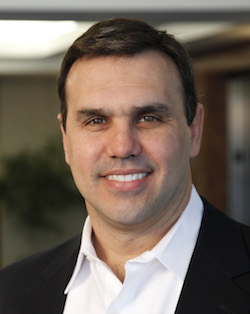 Tony Waskiewicz, CIO, Mercy HealthUnder pressure from ratings agencies and the Affordable Care Act (ACA), health care and hospital systems are facing liquidity challenges few other institutional investors face.
Tony Waskiewicz, CIO, Mercy HealthUnder pressure from ratings agencies and the Affordable Care Act (ACA), health care and hospital systems are facing liquidity challenges few other institutional investors face.
Revenue uncertainty drives these concerns, according to research firm Cerulli Associates, as well as the significant fixed income allocations required to maintain high bond ratings.
Chris Mason, lead analyst on Cerulli’s report, told CIO liquidity constraints were “first and foremost” for health care organizations, and as such had a “drastic effect” on their asset allocations.
“In one aspect, they’re striving for superior risk-adjusted returns whenever possible,” he said. But given the illiquidity associated with options such as hedge funds and private equity, “alternatives may not always be a suitable investment.”
This is particularly true in the case of short-term operating pools—one of the several capital sources hospital systems tend to manage. Unlike pension funds or endowments, many of the largest health care funds maintain at least three pools of capital, including a defined benefit plan, a defined contribution plan, and an endowment or foundation.
Mason said this multitude of asset pools contributes to the liquidity challenges faced by health care systems, as asset owners have to consider not just how to allocate assets within each pool, but how to allocate assets across pools—for example, investing less money in long-term funds in order to have more cash on hand to cover day-to-day operations.
These day-to-day operating costs also impact how risky investors can be, said Mercy Health CIO Tony Waskiewicz.
“Investment teams need to be aware of how successful hospital operations are,” Waskiewicz said. “We might need to move up or down the risk of the investment fund to make sure we’re not taking too much risk in a time of stress for the health system, or that we’re too conservative when cash flow is good.”
Right now, with operating margins burdened by ACA compliance, many hospitals are aiming to have their investment portfolios “work harder” for the overall health of the organization, according to the report.
“They may need to move money from some of the longer-term pools over to the short-term operating pool in order to deal with the fallout of any additional compliance they need with the ACA,” Mason said.
Additionally, as issuers of debt, most health organizations are focused on appeasing ratings agencies—another factor affecting asset allocation.
“Rating agencies are pretty old school still,” Mason said. “They view fixed income as the safest asset class you can be in, specifically investment-grade level fixed income.” With these agencies “breathing down their neck,” health care funds are “finding that they’re almost being pressured into considering investment-grade fixed income.”
But despite these constraints, Cerulli Associates found health care funds are still pursuing more illiquid strategies such as alternatives. Mason said these organizations are looking to diversify through hedge funds, achieve better risk-adjusted returns between fixed income and equity, and capture illiquidity premiums from private equity.
According to Waskiewicz, the ability to invest in alternatives is just a matter of striking the right balance.
“The healthier that you are as a health system and the stronger your balance sheet is, the more rating agencies will understand the use of alternatives as appropriate,” Waskiewicz said. “There is a direct correlation between balance-sheet strength and the ability for investment funds to take on liquidity risk.”
Related: The ‘Legend’ of Health Care & Risk Parity’s Liquidity Challenge

 Tony Waskiewicz, CIO, Mercy Health
Tony Waskiewicz, CIO, Mercy Health